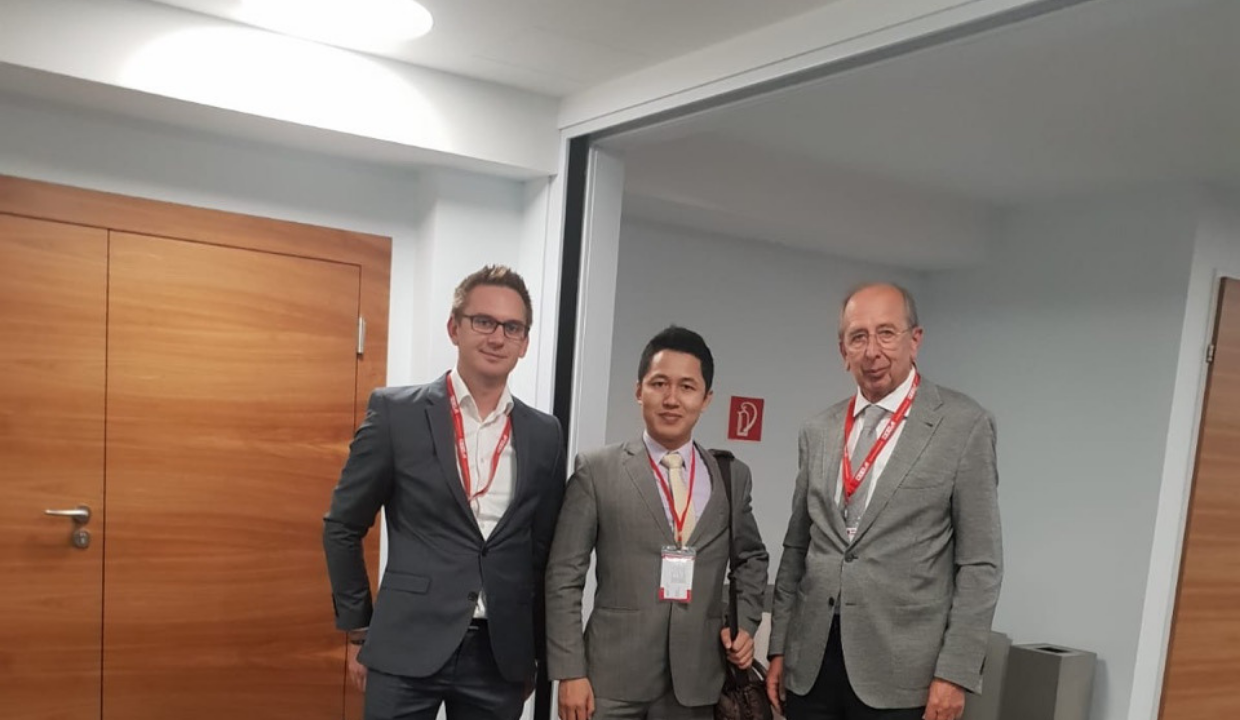A labor dispute is a dispute
over rights, obligations and interests arising between parties in employment
relationship. Labor disputes include individual labor disputes between
employees and employers, and collective labor disputes between labor
collectives and employers. When a labor dispute occurs, the competent agency,
organization or individual will settle it on the basis of the measures and
principles of labor dispute settlement prescribed in Chapter XIV of the Labor
Code 2012.
Employment Dispute Law Firm in
Vietnam
Measures for resolving labor disputes include:
negotiation, grassroots conciliation, settlement of individuals and
organizations competent to settle labor disputes.
For individual labor dispute resolution, labor conciliator,
People’s Court is an individual or organization competent to resolve disputes.
Labor conciliator; Chairman of the district People’s Committee; The People’s
Court is competent to resolve collective labor disputes over labor rights and
conciliators; The Labor Arbitration Council is competent to settle collective
labor disputes about benefits.
Negotiation is a method of resolving a dispute in which the
parties to a dispute deal directly with each other in order to reach an
agreement on the settlement of the dispute. In fact, this is the most widely
used solution. During the negotiation process, the parties will discuss issues
related to the dispute, and propose solutions to resolve that dispute. The
decision is made on the basis of agreement between the parties themselves and
is not the result of any external pressure.
Unlike negotiation, conciliation is a method of resolving disputes
involving third parties but not third parties make decisions but only support
and guide the parties to negotiate. Under the provisions of Clause 1, Article
201 of the Labor Code 2012, individual labor disputes must go through the
conciliation procedure of a labor conciliator before requesting a court to
settle them, except for labor disputes on disciplinary measures in the form of
dismissal or disputes over the unilateral termination of the labor contract;
compensation for damages, benefits when terminating a labor contract; between
domestic servants and employers; on social insurance in accordance with the law
on social insurance, on health insurance in accordance with the law on health
insurance; on compensation for damages between laborers and enterprises and non-business
units that send laborers to work abroad under contracts. If the two parties
reach an agreement, the labor conciliator shall make a record of successful
conciliation. On the contrary, the two parties cannot reach an agreement, and
the labor conciliator issues a conciliation plan for the two parties to
consider and if the two parties accept the conciliation plan, the labor
conciliator shall make a record of successful conciliation. In case the two
parties do not accept the conciliation plan or a disputing party has been duly
summoned for the second time but still absent without plausible reasons, the
labor conciliator shall make a record of unsuccessful conciliation.
Dispute resolution by the Chairman of the district People’s
Committee is the method to be applied when there is a request for resolving a
collective labor dispute on rights. Chairpersons of district-level People’s
Committees shall base themselves on labor laws, collective labor agreements,
registered labor rules and legal regulations and agreements to consider and
settle labor disputes dynamic.
The Labor Arbitration Council is the competent authority to settle
collective labor disputes about benefits. At the meeting of the Labor
Arbitration Council, there must be representatives of both parties to the
dispute. The Labor Arbitration Council has the responsibility to assist the
parties in self-negotiation. In case the two parties reach an agreement or
accept the mediation plan, the Labor Arbitration Council shall make a record of
successful mediation and issue a decision recognizing the agreement of the
parties. In case the two parties fail to reach an agreement or one of the
disputing parties has been duly summoned for the second time but still absent
without plausible reasons, the Labor Arbitration Council shall make a record of
unsuccessful mediation and after within 03 days, the labor collective has the
right to carry out the procedures to go on strike.
Trial is a mode of resolving individual labor disputes and
collective labor disputes over rights, in which the Court will issue a judgment
or decision to resolve the case. The settlement of labor disputes in court is
generally the final settlement activity after the dispute has been settled at
other stages with no results. The settlement of labor disputes at the Court is
done by a judicial body with special state power, proceeding according to the
strict procedures and procedures prescribed in the Civil Procedure Code 2015.
The greatest advantage of this method of dispute resolution is
that the court’s decisions on labor disputes are guaranteed to be enforced by
state coercive measures.
Employees as well as the labor collective and
employers should pay attention to selecting the most appropriate and optimal
resolution solution when labor disputes occur. It is also suggested to
consult with labour lawyers of law firm in Vietnam speacializing
in employment matters for efficiency.














0 comments:
Đăng nhận xét